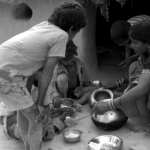Hiralal Sahu ended his life in October in Odisha, joining several thousands of farmers across the country in a tragic and seemingly unending saga of despair and death. Sahu, a resident of a small village in Baragada district of Odisha consumed a large dose of pesticides because he was unable to pay a loan of Rs. 70,000 approximately. His misery - inability to pay loan, was no different than that of thousands of farmers in India.
But is it so difficult to prevent such tragedies?
The Indian agricultural tragedies is a complex interplay of various social, economic, political and climatic factors. While there are a handful government schemes that support farmers monetarily, informal debt from local money lenders at exorbitant interest rates put the farmers through undue harassment and forfeiture of their land and assets. Climatic anomalies such as cyclones, droughts, floods and failure of monsoon destroy standing crop. Farmers find it difficult to get the compensation for these losses due to plethora of problems associated to knowledge of schemes, corruption, crop verification etc.
Divergence of water resources to heavy industries such as coal, electricity and minerals in Central and South India have cut deep into the water meant for irrigation purposes; dams built on fertile rivers also prevent the rich silt and water to settle on the shores of fields, stealing the land's fertility. The effluents from the industries pollute the water, rendering the fields fed with that water almost barren.
While the government is introducing welfare and insurance schemes for the marginalized rural population, there is a dire need for placing strong monitoring systems within these welfare schemes to ensure that these schemes reach the needy. The assessment of loss through satellite imaging and digital media would render the compensation process swift. Increase of MGNREGA working days from 100 to 150, m-Kisan, e-market, and schemes like soil health card schemes etc would go long way in dealing with agricultural tragedies.
This video was made by a Video Volunteers Community Correspondent. Community Correspondents come from marginalized communities in India and produce videos on unreported stories. These stories are ’news by those who live it.’ they give the hyper-local context to global human rights and development challenges. See more such videos at www.videovolunteers.org. Take action for a more just global media by sharing their videos and joining in their call for change.
A bridge about to collapse in Bihar
The bridge that was built by the British is slowly chipping off, and fatal accidents are a regular occurrence there. The villagers along with our Community Correspondent are requesting the Government officials to repair this bridge. They are getting assurance that the repair work will start soon though it...
The Positive Changes in a Primary Health Centre
The positive changes in one of the Primary Health Centre (PHC) in Ramgarh District is encouraging.

